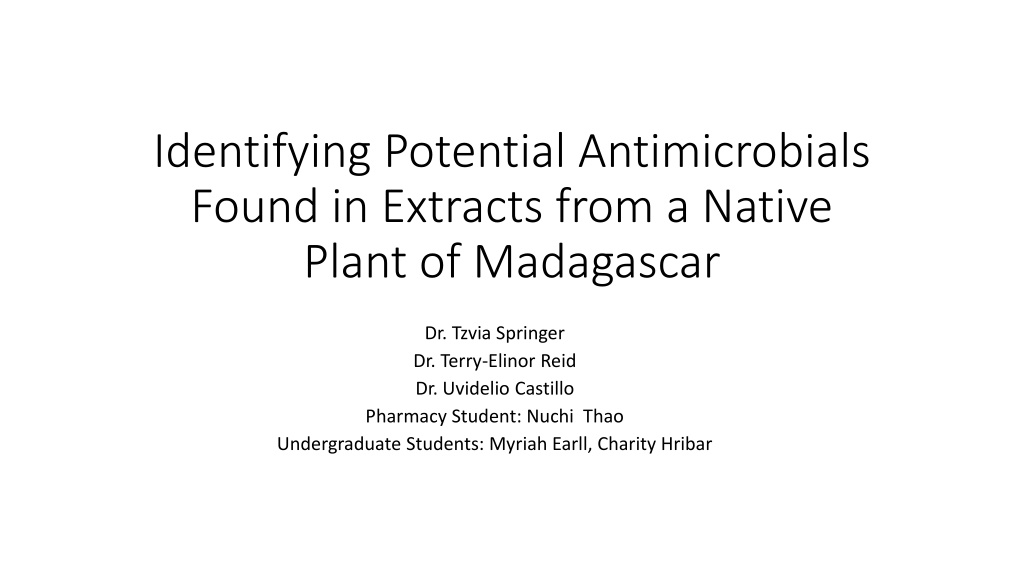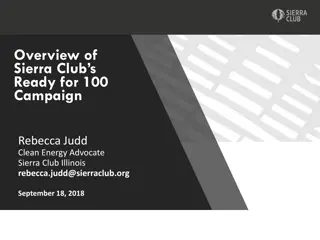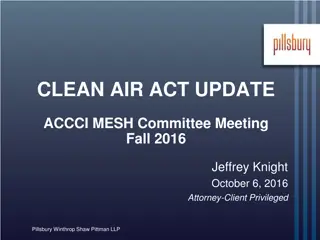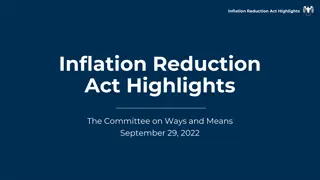Clean Cities Annual Report Summary
Annual report summary for Clean Cities program detailing activities, accomplishments, and impact of alternative fuel use in the region. Includes data collected on memberships, projects, energy use impact, and emissions reductions. Explore insights from the 2020 report and ongoing survey for 2021.
Download Presentation

Please find below an Image/Link to download the presentation.
The content on the website is provided AS IS for your information and personal use only. It may not be sold, licensed, or shared on other websites without obtaining consent from the author.If you encounter any issues during the download, it is possible that the publisher has removed the file from their server.
You are allowed to download the files provided on this website for personal or commercial use, subject to the condition that they are used lawfully. All files are the property of their respective owners.
The content on the website is provided AS IS for your information and personal use only. It may not be sold, licensed, or shared on other websites without obtaining consent from the author.
E N D
Presentation Transcript
Identifying Potential Antimicrobials Found in Extracts from a Native Plant of Madagascar Dr. Tzvia Springer Dr. Terry-Elinor Reid Dr. Uvidelio Castillo Pharmacy Student: Nuchi Thao Undergraduate Students: Myriah Earll, Charity Hribar
Todays Outline Acknowledgements Introduction of the Madagascar plant Who, What, Where? Initial study 2020 What did we discover? Current study 2021 What are we currently finding? Future work Where do we go next?
Acknowledgements Pharmacy Student (P4) Nuchi Thao Undergraduate Students Myriah Earll (Current) Charity Hribar (Current) Madison Chapman (Former) PHAR 537 Medicinal Natural Products Elective Course Dr. Terry-Elinor Reid Dr. Uvidelio Castillo CUW School of Pharmacy Concordia University Wisconsin Faculty Scholarship Committee
Who, Where, What? Who Kalanchoe daigremontiana Mother of Thousands , Mexican Hat Plant What Succulent plant Several uses in Hmong culture for skin wound applications All parts of the plant have a known toxin: Daigremontianin May cause heart and kidney failure if its concentration is too high Most research: compound bufadienolide Anti-tumor properties in a mouse model Where Native plant of Madagascar Household plant
Initial CUW School of Pharmacy 2019-2020 Study
Initial Findings CUWSOP Poster Fair, Nuchi Thao 2019
Featured Article February 2020 Left (Dr. Reid) Center (Dr. Castillo) Right (Dr. Springer)
Current CUW School of Pharmacy 2020-2021 Study
Monitoring 24 hour inhibition of bacterial growth from mature plant leaves
Results of Results of Bioassay 48 Bioassay 48 hours hours Salmonella 37 C 24 Hours E. coli S. aureus 37 C 24 Hours P. aeruginosa
24 Hours (Mature Leaves Extract) 0.5mg/ml 1mg/ml 2mg/ml 100 Inhibition 0 Salmonella S. aureus P. aeruginosa E. coli Bacterial Strain Mature Leaves Extract Inhibition at 24 hours (+/-) Salmonella 2, 1, mg/ml +, + S. aureus 2, 1, 0.5 mg/ml +, +, + Pseudomonas 1 mg/ml + E. coli 0.5 and 1mg/ml +, +
48 Hours (Mature Leaves Extract) 2mg/ml 1mg/ml 100 Inhibition 0 Salmonella S. aureus P. aeruginosa E. coli Bacterial Strain Mature Leaves Extract Inhibition at 48 hours (+/-) Salmonella 1 mg/ml, 2mg/ml +, + S. aureus 1 mg/ml + Pseudomonas No inhibition - E. coli 1 mg/ml + **All + results came from ethyl acetate extraction.
Monitoring 24 hour inhibition of bacterial growth from plant stems
24 Hours (Stem Extract) 100 Inhibition 0 Salmonella S. aureus P. aeruginosa E. coli 0.5 mg/ml 1 mg/ml 2 mg/ml Bacterial Strain Stem Extract 1 mg/ml Salmonella 2, 1, 0.5 mg/ml S. aureus Pseudomonas No growth inhibition E. coli No growth inhibition
Quantitative analysis of bacterial growth inhibition from mature plant leaves crude extract in a 96-well assay
Inhibition of Escherichia coli growth 0.5 0.45 0.4 0.35 Absorbance (OD600) 0.3 0.25 0.2 0.15 0.1 0.05 0 0 4 8 12 16 20 24 Hours E. coli alone 0.25mg/ml 0.5mg/ml 1mg/ml 2mg/ml Conclusions: Inhibition of E. coli was seen to be concentration dependent. 2mg/ml is the minimal inhibitory concentration.
Inhibition of Salmonella enterica growth 0.45 0.4 0.35 Absorbance (OD600) 0.3 0.25 0.2 0.15 0.1 0.05 0 0 4 8 12 16 20 24 Hours Salmonella alone 0.25mg/ml 0.5mg/ml 1mg/ml 2mg/ml Conclusions: Inhibition of S. enterica was seen to be concentration dependent. 2mg/ml is the minimal inhibitory concentration.
Inhibition of Staphylococcus aureus growth 0.8 0.7 0.6 Absorbance (OD600) 0.5 0.4 0.3 0.2 0.1 0 0 4 8 12 16 20 24 Hours S. aureus alone 0.25mg/ml 0.5mg/ml 1mg/ml 2mg/ml Conclusions: Inhibition of S. aureus was seen to be concentration dependent. 2mg/ml is the minimal inhibitory concentration.
Enhancement of Pseudomonas aeruginosa growth 0.6 0.5 Absorbance (OD600) 0.4 0.3 0.2 0.1 0 0 4 8 12 16 20 24 Hours P. aeruginosa alone 0.25mg/ml 0.5mg/ml 1mg/ml 2mg/ml Conclusions: P. aeruginosa growth was not inhibited but enhanced in the presence of extract.
Thin Layer Chromatography Separation (TLC) 1st: hexane mature leaves extract 2nd: ethyl acetate mature leaves extract 3rd: hexane stems extract 4th: ethyl acetates stems extract Mobile Phase: 90/10% EtOAc/MeOH Post Iodine Treatment UV Light: 365 nm Conclusions: TLC Separation shows prominent separation of bands and differ between plant mature leaves and stems.
Where do we go next? Complete 96-well inhibitory growth assay on stem extract Purification of crude extract using Flash chromatography Identify which compound inhibits the bacteria the most Further identify why P. aeruginosa has an enhanced growth in the presence of extract This may explain metabolic needs for P. aeruginosa to survive Ultimately, identifying novel antimicrobial compounds towards these known human pathogens can combat antimicrobial resistance which is an ongoing threat worldwide.






















